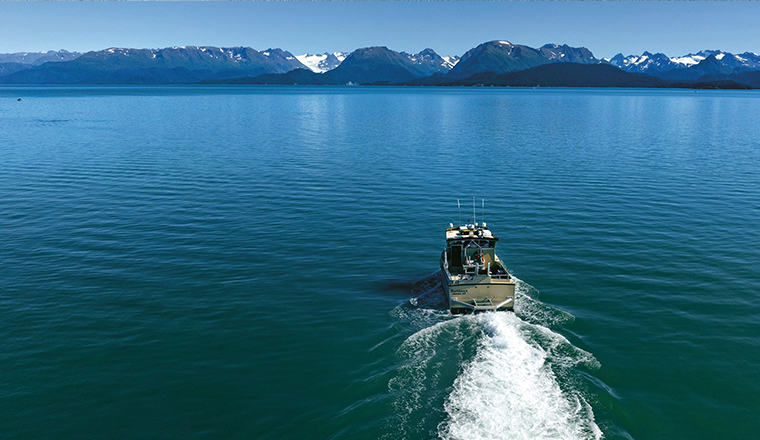Need Help
If you need help setting up services or accessing your accounts, please call our Customer Care Team at 866.552.9172 during business hours (7 a.m. — 5 p.m. PST, M-F) or email us at CustomerCare@AgWestFC.com.
Location
If you need help setting up services or accessing your accounts, please call our Customer Care Team at 866.552.9172 during business hours (7 a.m. — 5 p.m. PST, M-F) or email us at CustomerCare@AgWestFC.com.
Location
If you need help setting up services or accessing your accounts, please call our Customer Care Team at 866.552.9172 during business hours (7 a.m. — 5 p.m. PST, M-F) or email us at CustomerCare@AgWestFC.com.
Securely update and exchange balance sheet information with your AgWest team.
Put your idle cash to work with a suite of banking services that sweeps funds between accounts. Fees apply.
Commercial salmon fishing in Bristol Bay, Alaska, is an intense, exhilarating business. The salmon season is short, typically lasting from mid-June to late July. Fishermen work around the clock, often in harsh weather conditions on boats ranging from small skiffs to larger gillnetters, navigating choppy waters, strong tides and unpredictable weather. Crews bond over shared hardships and the thrill of the catch, but there’s also a fierce drive to out-fish the neighboring boats. The stakes are high, and fish must be processed quickly to maintain quality. A successful season can mean a significant payday, while a poor one can be a signification drain on finances.
Ian Pitzman has been in the commercial fishing business for 40 years. Growing up in Homer, Alaska, he originally wanted to be a schoolteacher, so he worked on salmon boats during the summers to make money for college. The risk and reward appealed to him. Today, he manages his family’s salmon-fishing business and a fleet of 10 multipurpose vessels in Bristol Bay and the Bering Sea to diversify risk and respond to sweeping changes in the industry.
.jpg?sfvrsn=65a29f50_2)
Ian steers
his boat through the
Alaskan waters.
Ideally, Ian and his family would fish for salmon in the Cook Inlet closer to home, but over the years Homer, Alaska, has become part of Alaska’s population center. It’s home to one of the few seaports connected by a highway system. With more people sharing the water resources, fishermen like Ian are compelled to find new locations in remote areas where salmon can be more plentiful.
Farmers easily relate to moving equipment from field to field. In Ian’s case, as a sea harvester, moving vessels from Homer to isolated fishing grounds like Bristol Bay means hoisting boats from the water, transporting them by highway and roadway, relaunching them into a 100-mile-long lake, and crossing and traveling down a 75-mile-long river out of the Bristol Bay watershed and into salt water.
Ian fishes for salmon with his sons and daughters for a month during the summer. For the other 11 months, he is the fleet manager for a vessel management group called Fortune Sea. The fleet is comprised of 10 midsize vessels. Some vessels fish for crab in the Bering Sea, others for cod in the Gulf of Alaska, and they double as tender boats for the salmon fishery in Bristol Bay. Processors contract with tender vessels to act as remote buying stations for fishermen at sea. They take fresh fish deliveries from smaller, independent fishing vessels and transport them in refrigerated seawater as quickly as possible to the processor.
“It takes a mental shift to fish for yourself, and then operate a tender vessel,” says Ian. “As a fisherman, you’re in it for yourself and your crew and there’s a lot of competition with other vessels. When you’re tendering, you have to switch your brain to a service mentality and ask yourself, ‘How can I help others?’
Our tender vessels transport fish for the small-boat fleet, but we also bring groceries, fuel, spare parts, news from home and other services to support the people who are doing the harvest. Customer service with a smile is the goal.”

Throughout his career, Ian has diversified risk by participating in several different fisheries. However, he says the market downturn that started in 2023 was the first time he saw the value of seafood collapse across multiple species. It started in Bristol Bay with salmon. A huge sockeye harvest impacted fish quality as processors struggled to handle the massive volume and excess supply led to lower prices. An abundant harvest in Russia, high inventory levels in Japan and a strong dollar reduced international demand for U.S. seafood, while high domestic inflation caused consumers to pull back on purchases.
“It’s tough when expenses haven’t changed but the fish are worth 50% less,” says Ian. “But fishermen are no strangers to volatility. The best lesson I’ve learned is that you need to have a high risk tolerance, but you also need a practical perspective in your ear to say, ‘Let’s think about this,’ so you don’t get too far ahead of yourself. That’s why we like working with the people at AgWest. They’re farm focused, so they understand the ups and downs. They appreciate what fishermen go through because essentially, we’re harvesters of the sea.”